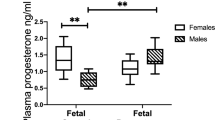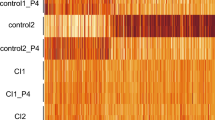Abstract
PROGESTERONE has been found to be an effective anaesthetic agent when given intraperitoneally to animals1,2 and 21 hydroxy pregnandione succinate has been used clinically for general anaesthesia3. Of practical importance in clinical anaesthesia is the fact that in animals progesterone potentiated the effect of ether and chloroform2. No clinical confirmation of this effect in humans is, however, available. Paradoxically, it is believed that progesterone renders the respiratory centre more sensitive to carbon dioxide and that this may account for the lowered pCO2 in blood during pregnancy.
This is a preview of subscription content, access via your institution
Access options
Subscribe to this journal
Receive 51 print issues and online access
$199.00 per year
only $3.90 per issue
Buy this article
- Purchase on SpringerLink
- Instant access to full article PDF
Prices may be subject to local taxes which are calculated during checkout
Similar content being viewed by others
References
Selye, H., Endocrinology, 30, 437 (1942).
Selye, H., J. Pharmacol. Exp. Therap., 73, 127 (1941).
Murphy, F. J., Guadagni, N. P., and DeBon, F., J. Amer. Med. Ass., 158, 1412 (1955).
Lurie, A. O., Villee, C. A., and Reid, D. E., J. Clin. Endocrinol. and Met., 26, 742 (1966).
Lurie, A. O., Reid, D. E., and Villee, C. A., Amer. J. Obst. and Gynec., 96, 670 (1966).
Baron, D. N., and Abelson, D., Nature, 173 (1954).
Author information
Authors and Affiliations
Rights and permissions
About this article
Cite this article
LURIE, A., WEISS, J. Progesterone in Cerebrospinal Fluid during Human Pregnancy. Nature 215, 1178 (1967). https://doi.org/10.1038/2151178a0
Received:
Issue date:
DOI: https://doi.org/10.1038/2151178a0
This article is cited by
-
The role of tanycytes in the mechanisms of sexual differentiation of the brain
Neuroscience and Behavioral Physiology (1978)
-
Metabolites of 3H-Oestradiol-17β in the Cerebrospinal Fluid of the Rhesus Monkey
Nature (1968)



